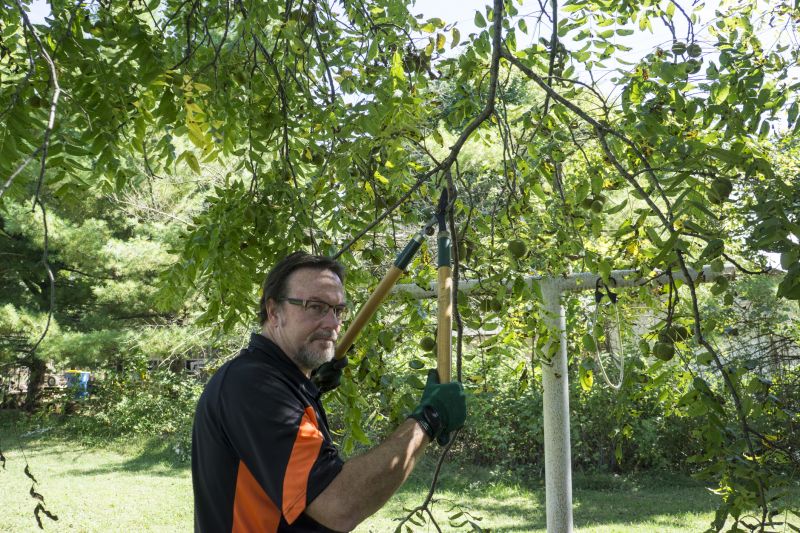Top Products For Tree Trimmings To Simplify Your Garden Tasks
Discover essential tools and accessories designed to make trimming trees safer, easier, and more efficient for all skill levels.
 Tree trimming is an essential part of maintaining healthy and attractive trees in residential and commercial landscapes. Proper tools and products can make the trimming process more efficient and safer, whether for shaping, removing dead branches, or managing growth. A variety of products are available to assist with different aspects of tree trimming, from basic pruning shears to advanced pole saws and professional-grade equipment. Selecting the right tools depends on the size and type of trees, frequency of maintenance, and user experience.
Tree trimming is an essential part of maintaining healthy and attractive trees in residential and commercial landscapes. Proper tools and products can make the trimming process more efficient and safer, whether for shaping, removing dead branches, or managing growth. A variety of products are available to assist with different aspects of tree trimming, from basic pruning shears to advanced pole saws and professional-grade equipment. Selecting the right tools depends on the size and type of trees, frequency of maintenance, and user experience.
Top Overall Option
Multipurpose Tree Trimming Kit
A comprehensive tree trimming kit that includes a variety of hand tools, extension poles, and safety accessories, designed to accommodate different pruning needs. Its versatility makes it suitable for both light and more demanding trimming tasks, providing a balanced combination of functionality, comfort, and safety.
Types of Products For Tree Trimmings
Hand Pruners
Compact, easy-to-use tools ideal for precise cuts on small branches and stems.
Lopping Shears
Longer-handled tools suitable for cutting thicker branches at eye level.
Pole Pruners
Extendable tools that allow trimming of high branches without a ladder.
Chainsaws
Powered equipment for cutting large branches or small trees efficiently.
Reciprocating Saws
Versatile saws useful for more complex or detailed trimming tasks.
Pruning Saws
Curved or straight saws designed for making clean cuts on thicker wood.
Grafting Knives
Specialized tools for precision cuts in grafting or delicate pruning.
Safety Gear
Protective gloves, goggles, and helmets to ensure safety during trimming.
Replacement Blades
Additional blades for extending the lifespan of your cutting tools.
Extension Poles
Accessories that increase reach for high or hard-to-access branches.
Debarking Tools
Tools for removing bark during pruning or grafting processes.
Tree Clamps
Devices used to hold branches steady during cutting or shaping.
Wire Cutters
Useful for removing wire or ties from branches or trees.
Aerial Lifts
Equipment for safely reaching very high branches in large trees.
Brush Chippers
Machines that convert trimmed branches into mulch or chips.
Tree Rakes
Tools for gathering and removing debris after trimming.
Plant Ties and Supports
Materials for supporting or training new growth during pruning.
Popular Choices
Widely used for detailed trimming of small branches and stems.
Popular for reaching high branches without ladders.
Convenient for quick cuts on medium-sized branches.
Preferred for thicker branches and larger pruning jobs.
Common safety gear for protecting during tree trimming.
Versatile sets combining several pruning tools in one package.
Popular for their portability and power in trimming tasks.
Frequently chosen for specific pruning or grafting projects.
Essential for cleanup after trimming sessions.
Often used in professional tree maintenance for high branches.
Common for processing trimmed branches into mulch.
Helpful for removing ties or supports from branches.
Popular among horticulturists for precise grafting work.
Favored for their ability to handle larger branches.
Used to stabilize and support trees during pruning.
Worn by professionals for safety and comfort.
When choosing products for tree trimmings, it's important to consider the safety features, durability, and ease of use. For example, lightweight tools can reduce fatigue during extended trimming sessions, while ergonomic designs help prevent strain or injury. Additionally, accessories such as replacement blades, extension poles, and protective gear can enhance the overall trimming experience. Investing in high-quality products can lead to cleaner cuts, healthier trees, and safer operations.
In Santa Rosa, CA, where residential gardens and urban trees are abundant, having a reliable set of tree trimming tools can help maintain the beauty and health of your landscape. Whether you're a homeowner tackling routine pruning or a professional landscaper managing multiple properties, the right equipment can make a significant difference. It's advisable to assess your specific needs and choose versatile tools that can handle a range of tree sizes and pruning tasks. Proper maintenance of your tools will also ensure they remain effective and safe over time.
Overall, understanding the different types of products available and their specific applications can help you make informed decisions. From manual hand pruners to powered chainsaws, each tool serves a unique purpose and suits different levels of experience and project scope. With the right selection, you can approach tree trimming tasks confidently and efficiently, contributing to the health and aesthetics of your outdoor space.
Key Buying Considerations
- Size and weight of the tools for ease of handling and reducing fatigue
- Blade material and sharpness for clean cuts and durability
- Reach extension capabilities for high branches without ladders
- Power source options such as battery, electric, or gas for convenience and performance
- Safety features including guards, safety switches, and protective gear compatibility
- Ease of maintenance and availability of replacement parts
- Ergonomic design to minimize strain during prolonged use
- Versatility of tools for multiple trimming tasks and tree sizes
- Compatibility with other accessories like extension poles or blades
- Storage options for organized and safe tool management
- Noise levels, especially for residential areas
- Cost and value for the range of included features and durability
- User reviews and recommendations for real-world performance insights
- Availability of local support or warranty services
- Environmental considerations, if relevant, for emissions or disposal
